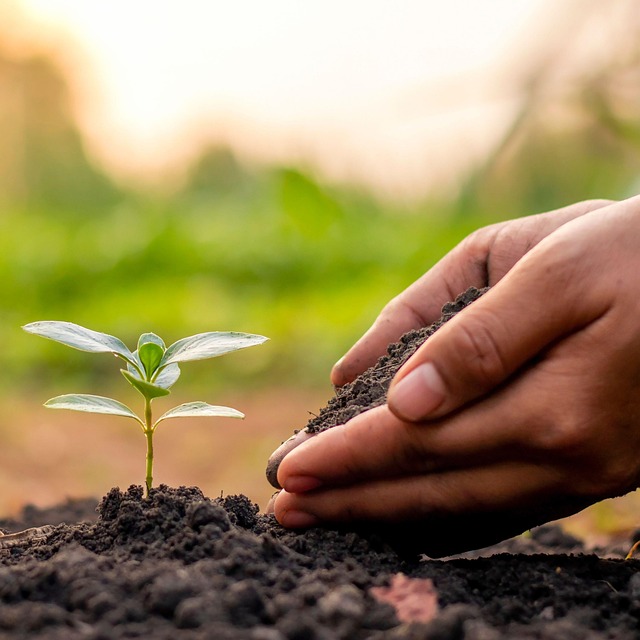Affiliate Disclosure: I earn commissions if you shop through the links below at no additional cost to you.
Last Updated on February 20, 2025 by Jeremy
Imagine stepping into your RV after a long day of exploring, reaching for fresh basil or cherry tomatoes, and whipping up a meal using ingredients you grew yourself—all while on the road. It’s not just a dream; it’s completely possible with the right setup.
Gardening in an RV might sound like a challenge, but with the right plants, containers, and techniques, you can create a thriving mobile garden. Whether you’re a weekend camper or a full-time RVer, growing your own food means less reliance on grocery stores, more control over what you eat, and a rewarding new hobby.
Let’s dig in and discover how to grow a garden in your RV, from choosing the best plants to maximizing small spaces with vertical gardening systems.


The Ultimate Guide to Growing a Garden in an RV
1. Choose the Right Plants
Before you start planting, think about what foods you actually enjoy eating. Love grilling? Fresh herbs like basil and oregano are must-haves. Prefer salads? Lettuce and cherry tomatoes grow great in small spaces.
But size matters, too. Since space is limited in an RV, compact and high-yield plants work best. Avoid root vegetables like potatoes or carrots, as they require deep soil. Instead, opt for bush varieties, herbs, and leafy greens.
✔ Best Plants for RV Gardening:
- Cherry Tomatoes – Small, high-yield, and perfect for salads or snacking.
- Dwarf Peppers – Compact and thrive in containers.
- Lettuce & Spinach – Fast-growing, cut-and-come-again crops.
- Basil, Thyme, & Parsley – Great for cooking and easy to grow indoors.
- Green Onions & Chives – Regrow quickly and take up little space.
Want to maximize space? Vertical gardening is your best friend. Systems like The Garden Tower Project let you grow 50 plants in just 4 square feet—perfect for RV life!

2. Pick the Right Containers
Choosing the right containers makes or breaks an RV garden. You need options that are lightweight, durable, and space-saving.
✔ Best Container Options:
- Fabric Pots – Allow great airflow and drainage while being easy to store.
- Self-Watering Containers – Reduce watering frequency and prevent overwatering.
- Stackable Planters – Maximize vertical space without taking up counters.
- Hanging Baskets – Perfect for herbs and strawberries.
- Hydroponic Systems – No soil needed, great for leafy greens indoors.
For the ultimate low-maintenance garden, check out Lettuce Grow—a self-watering, self-fertilizing system that’s perfect for RVers.

3. Use High-Quality Soil & Fertilizer
RV gardening requires nutrient-rich soil, since plants won’t have access to deep, natural ground. Organic potting soil works best, along with slow-release fertilizers.
✔ Top Soil & Fertilizer Brands:
- FoxFarm Ocean Forest – Nutrient-rich and great for all plants.
- Miracle-Gro Organic Mix – Easy to find and well-balanced.
- Espoma Organic Fertilizer – Provides slow-release nutrients for continuous growth.
Want to make your own compost? Worm bins are a great way to recycle food scraps and create nutrient-rich fertilizer—right inside your RV!

4. Watering & Drainage Strategies
Watering can get tricky in an RV. You need a system that keeps plants hydrated without making a mess.
✔ Watering Tips for RV Gardens:
- Use self-watering containers to prevent soil from drying out.
- Add perlite or vermiculite to soil for better drainage.
- Place a tray under pots to catch excess water.
- Use a spray bottle for delicate seedlings.
If you’re on the move, secure plants properly to avoid spills or soil messes.

5. Maximizing Sunlight & Indoor Lighting
Plants need at least 6 hours of sunlight per day to thrive. But what happens when you’re parked in the shade or it’s a cloudy day? Grow lights are the perfect solution.
✔ Best Grow Lights for RV Gardening:
- Sondiko LED Grow Light – Affordable and adjustable for small spaces.
- LEOTER Full Spectrum Light – Mimics sunlight and promotes healthy growth.
- Clip-On Grow Lights – Save space and attach easily to countertops.
Position plants near windows during the day, and use grow lights at night to keep your garden thriving year-round.

6. Dealing with Pests & Diseases
Even in an RV, pests and plant diseases can be a problem. The good news? You don’t need harsh chemicals to keep them away.
✔ Natural Pest Control Solutions:
- Neem Oil Spray – Keeps aphids and spider mites away.
- Diatomaceous Earth – Safe for pets and kills unwanted bugs.
- Companion Planting – Basil, garlic, and marigolds naturally repel insects.
Keep plants healthy by ensuring proper air circulation and not overwatering, which prevents mold and root rot.

7. Harvesting & Enjoying Your RV Garden
One of the best parts of RV gardening? Fresh, organic food at your fingertips!
✔ Harvesting Tips:
- Herbs: Snip leaves regularly to encourage new growth.
- Leafy Greens: Cut outer leaves and let the plant keep growing.
- Tomatoes & Peppers: Pick when fully ripe for the best flavor.
Once you start harvesting regularly, your RV garden will provide a continuous supply of fresh food—saving you money and grocery store trips!

Final Thoughts: Is Growing a Garden in an RV Worth It?
Absolutely. RV gardening is easier than you think and provides huge benefits, from fresh ingredients to the satisfaction of growing your own food.
✔ Why You Should Try It:
✅ Saves money on groceries.
✅ Gives you healthy, organic food.
✅ Adds beauty and greenery to your RV space.
✅ Provides a rewarding, stress-relieving hobby.
With systems like The Garden Tower Project and Lettuce Grow, even small RVs can support a thriving garden.
So, what’s stopping you? Start your RV garden today! Got questions? Drop a comment below—I’d love to help.




.jpg/:/cr=t:5.56%25,l:0%25,w:100%25,h:88.89%25/rs=w:1240,h:620,cg:true)



Leave a Reply